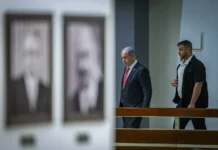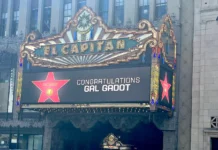Tag: Second Temple
OU’s 20th annual Tisha B’Av program to address recent Jewish tragedies
The 20th annual Tisha B’Av program on July 18 sponsored by the Orthodox Union will not only focus on traditional themes surrounding the destruction of the First and Second Temples, as well as other...
2,000-year old seal bearing portrait of Apollo unearthed in soil around Western Wall
A 2,000-year-old gem seal (intaglio) bearing the portrait of the Greek god Apollo has been unearthed in soil removed from the foundation of Jerusalem’s Western Wall during the Tzurim Valley National Park sifting project,...
On Tisha B’Av, it’s time for Americans to step back from apocalyptic rhetoric
Americans are experiencing a summer of discontent in a way that exceeds any in living memory. The nation is divided not just along political lines but seems increasingly immersed in something much dangerous—a culture...
Mourning in 2020: Tisha B’Av spotlights losses old and new
This year Jews the world over got into the Tisha B’Av mood several months earlier than usual.
During a typical summer, Jewish families and individuals tear themselves away from family vacations, beach outings, amusement parks...
Pontius Pilate built Jerusalem’s ‘Pilgrimage Road,’ say Israeli archaeologists
Archaeologists now believe that Jerusalem’s “Pilgrimage Road” was built by none other than Pontius Pilate, the infamous Roman governor of Judea.
The ancient road in the City of David, which was preserved under the ashes...
Tisha B’Av 101: Connecting the dots of Jewish memory
Memory and imagination: The two keys that unlock the Jewish holiday of Tisha B’Av.
In fact Tisha B’Av, a holiday many Jews are unfamiliar with, is all about memory, the collective memory of the Jewish...
Ancient Jewish remains, violated by looters, given proper burial near Jericho
Hundreds of people arrived in Kfar Adumim on Tuesday to attend the reinterment of the remains of hundreds of Second Temple-era Jews whose burial cave near Jericho was destroyed by looters.
The remains were found...
































